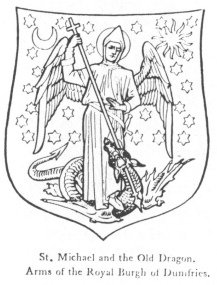
Dragons! Dragons!! Dragons!!! when I was young about the age of 11, dragon cartoons and movies fascinates me. Reptiles spiting fire, must be very interesting and ever since it got me wondering if they ever existed, and what may have happened to their survival? Or are Dragons myth?
The British Dictionary described Dragons as ‘’a creature of Teutonic mythology; usually represented as breathing fire and have a reptilian body and sometimes wings’’. Dragons are legendary creatures, they are grouped as mythological in the two most well-known cultural traditions, which are the The Chinese Dragon and the European Dragon.
EVOLUTION OF DRAGONS

Dragons occurs in many legend stories, which in most of these Dragon tales makes mention of 'dragon slayers', for example are Indra, who, according to the Rigveda, slew the serpent Vritra, Zeus, who, according to Hesiod's Theogony, slew the serpent Typhon, and Thor, who, according to the Eddas, slew the Midgard serpent. In nearly every iteration of the story, the serpent is either multi-headed or "multiple" in some other way. The Lernaean Hydra, slain by Heracles, had nine heads;Hesiod describes Typhon as having one hundred heads, and Vritra is likewise described as multi-headed. There is no clear history of where and how dragon stories first emerged but the huge flying / spewing - fire creature was described by the ancient Greek and Sumerians.
HOW RELIGION AFFECTED THE LEGENDARY TALES OF DRAGONS
When Christianity began to spread around the world, this world most popular and enduring mythology creatures slowly began to lose audience. Dragons took on a decidedly sinister interpretation and came to represent Satan. In medieval times, most people who heard anything about dragons knew them from the Bible, and it's likely that most Christians at the time believed in the literal existence of dragons. After all, Leviathan — the massive monster described in detail in the Book of Job, chapter 41 — seems to describe a dragon in detail:
"I will not fail to speak of Leviathan's limbs, its strength and its graceful form. Who can strip off its outer coat? Who can penetrate its double coat of armor? Who dares open the doors of its mouth, ringed about with fearsome teeth? Its back has rows of shields tightly sealed together; each is so close to the next that no air can pass between. They are joined fast to one another; they cling together and cannot be parted. Its snorting throws out flashes of light; its eyes are like the rays of dawn. Flames stream from its mouth; sparks of fire shoot out. Smoke pours from its nostrils as from a boiling pot over burning reeds. Its breath sets coals ablaze, and flames dart from its mouth" (NIV).
The belief in dragons was based not just in legend but also in hard evidence — or so it seemed. For millennia no one knew what to make of the giant bones that were occasionally unearthed around the globe, and dragons seemed a logical choice for people who had no knowledge of dinosaurs.
The Christian church created legends of righteous and godly saints battling and vanquishing Satan in the form of dragons. The most celebrated of these was St. George the Dragon Slayer, who in legend comes upon a town threatened by a terrible dragon. He rescues a fair maiden, protects himself with the sign of the cross, and slays the beast. The town's citizens, impressed by St. George's feat of faith and bravery, immediately convert to Christianity.
ANIMALS THAT MAY HAVE INSPIRED DRAGONS
As myth, there are real animals that many have inspired the mythological form of dragons,and first we take a look into the attributes of a dragon
a) The spiting firing behavior
The spitting cobras may have been the origin of the myth of the fire-breathing dragon
b) The hard and very powerful nature
Nile Crocodiles know to have a very hard and thick rough skin which grew to about 5 - about 7 meters long may have been the origin of the myth of the hard textures of the dragon skin
c) The flying nature
To make the mythological creature interesting, skeletons of dead whales, as well as dinosaurs found in the Earth inspired the mythological fly nature of the dragon.
CONCLUSION
Dragons, in one form or another, have been around for millennia. Through epic fantasy fiction by J.R.R. Tolkien and others, dragons have continued to spark our collective imagination and — unlike the dinosaurs that helped inspire stories about them — show no sign of dying out.

Hi! I am a robot. I just upvoted you! I found similar content that readers might be interested in:
https://www.livescience.com/25559-dragons.html